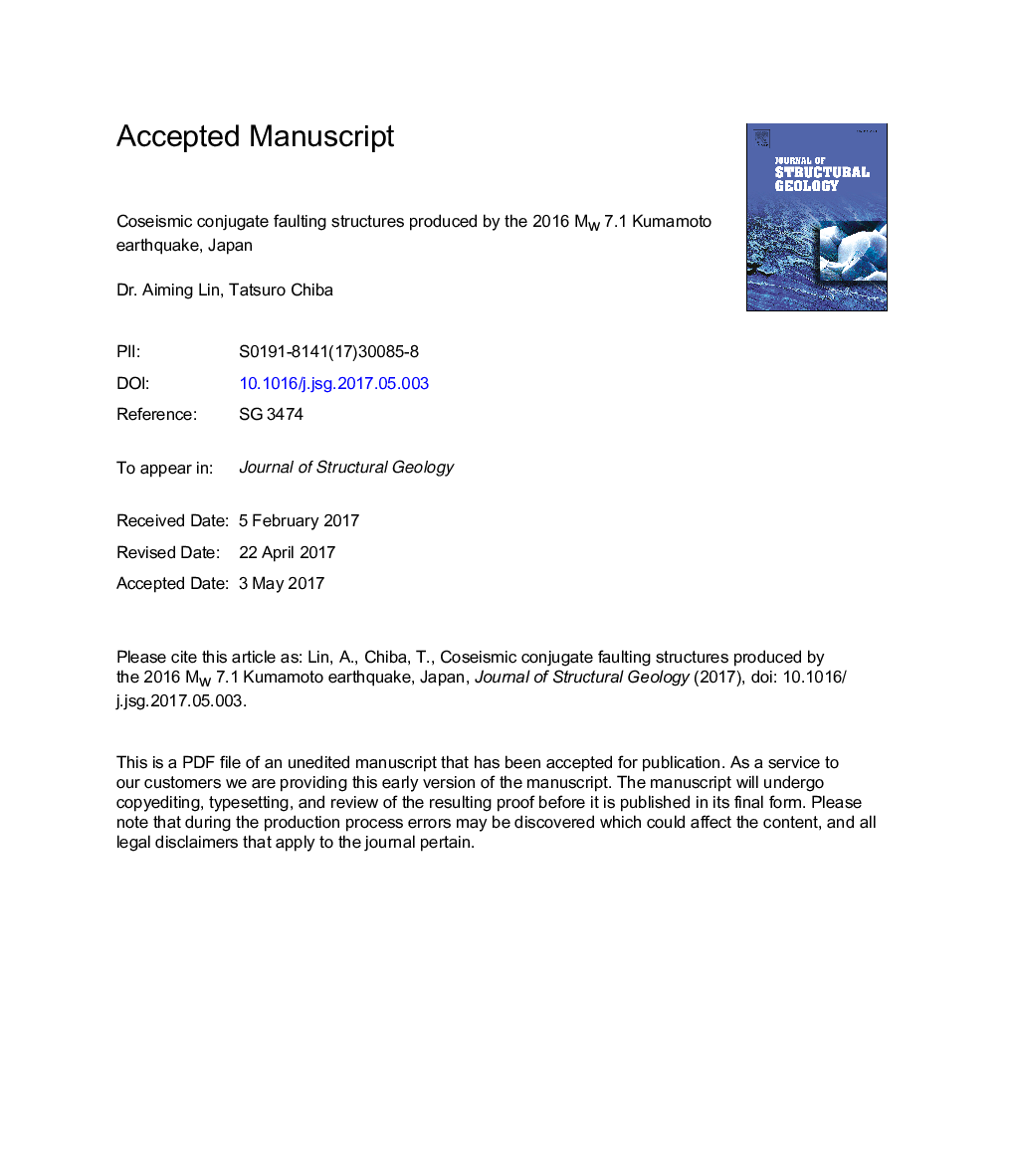| کد مقاله | کد نشریه | سال انتشار | مقاله انگلیسی | نسخه تمام متن |
|---|---|---|---|---|
| 5786328 | 1640481 | 2017 | 36 صفحه PDF | دانلود رایگان |
عنوان انگلیسی مقاله ISI
Coseismic conjugate faulting structures produced by the 2016 Mw 7.1 Kumamoto earthquake, Japan
دانلود مقاله + سفارش ترجمه
دانلود مقاله ISI انگلیسی
رایگان برای ایرانیان
کلمات کلیدی
موضوعات مرتبط
مهندسی و علوم پایه
علوم زمین و سیارات
زمین شناسی
پیش نمایش صفحه اول مقاله

چکیده انگلیسی
Field investigations and analyses of airborne LiDAR data reveal that the 2016 Mw7.1 Kumamoto earthquake produced a â¼40-km-long surface rupture zone with a typical conjugate Riedel shearing fault structure along the pre-existing right-lateral strike-slip Hinagu-Futagawa Fault Zone (HFFZ). The conjugate Riedel shearing structure comprises two sets of coseismic shear fault zones that are oriented to NE-SW to ENE-WSW and WNW-ESE to E-W. The NE-SW to ENE-WSW-trending shear fault zone is characterized by R Riedel shear structures with right-lateral strike-slip displacement of up to 2.5Â m, including left-stepping en echelon cracks (T-shear) and mole tracks (P-shear). In contrast, the WNW-ESE to E-W-trending shear fault zone is dominated by Râ² Riedel shear structures with left-lateral displacement of up to 1.3Â m, including right-stepping en echelon tension cracks (T) and mole tracks (P), which are concentrated in a zone of <10Â m within individual rupture zones. Our findings demonstrate that the coseismic conjugate Riedel shear faulting is mainly controlled by the pre-existing active strike-slip faults of HFFZ under the present E-W compressive stress in the study area, associated with the ongoing penetration of the Philippine Sea Plate into the Eurasian Plate.
ناشر
Database: Elsevier - ScienceDirect (ساینس دایرکت)
Journal: Journal of Structural Geology - Volume 99, June 2017, Pages 20-30
Journal: Journal of Structural Geology - Volume 99, June 2017, Pages 20-30
نویسندگان
Dr. Lin, Tatsuro Chiba,